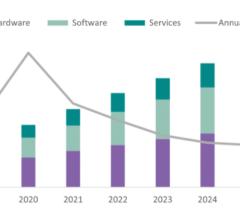
Provider directories and trust mechanisms for the push and query retrieve models of healthcare information exchange (HIE) are being constructed at a national level. HIEs are piloting exchange, but data flow is limited. No matter what governance and operational characteristics are selected within various regions — either full electronic health record (EHR) or a secure direct messaging system for disaster recovery — the value of HIE to patients, physicians and payers must be quantifiably demonstrated. In other words, HIE will need to develop a business model where sustainability is paramount and moves beyond generating revenue for the vendors who today control the allocation of resources.
Leaders are needed who are interested in working collaboratively to create a common vision and one-care team across multiple facilities for patients. In order to attract funding for innovative initiatives where the mission is to improve the quality of patient care, healthcare leaders need to proactively discuss plans to ensure quality care that truly supports the sharing of operating costs and governance across health plans, community stakeholders and providers for continued growth at the local level. One of the most under-valued, or under-considered, medical data is the use factor and importance of providing a clinical view of medical images through the HIE. While an imaging report is valuable, a picture is much more useful for the clinician and the patients as care options are discussed. Vendor neutral archives (VNAs) are a smart tool for managing imaging data locally and regionally, and should be at the top of the list of priorities for collaboration tools.
It is widely understood that VNAs improve the way healthcare providers access patient data and, when implemented correctly, can provide the clinician with a more complete patient record that could lead to better care. Perhaps lesser known is the potential of the VNA to serve as a pathway for all care providers to access patient imaging data, or all data if configured as an XDS repository, when and where it is needed. Information in this article will help local and regional healthcare leaders focus on the stage that is being set to procure the necessary infrastructure to build and maintain federated architecture while constructing a case for VNA in their region.
Transforming the Industry
The American Recovery and Reinvestment Act (ARRA) of 2009 called for the brightest minds to improve the quality of healthcare, achieve better outcomes for patients and reduce medical errors. Stage 1 Meaningful Use (MU) called for the spread of EHRs, incentivizing providers to collect data by receiving payments. Stage 2 MU promoted healthcare IT adoption. Stage 3 MU is moving HIE toward certification. In response, activity in the healthcare industry to invent and transform technology that will efficiently and effectively implement the electronic exchange of data is slowly taking off. Some strategies are showing signs of maturity. Primary care executives and senior level staff are increasingly confident discussing and procuring contracts such as the business associates agreement (BAA) to work with third-party health information organizations (HIOs). A number of HIE organizations are pursuing national accreditation to exchange data via DirectTrust1 and become part of Healtheway to exchange trust anchors.
Since 2010, the number of hospitals having a basic EHR has tripled. More than 38 percent of physicians reported adopting basic EHRs in 2012 according to a report by Harvard School of Public Health, Mathematica Policy Research and the Robert Woods Johnson Foundation.2 According to the study, hospitals were more likely to implement EHR functions to record patient demographics, vital signs and smoking status than they were functions for electronically submitted lab reports or summary records for patient transitions between care settings.
From an observational perspective, many healthcare industry drivers are not playing well together. Providers are fighting to secure preferred referral status. Payers and provider groups are building competing HIEs in the same region. Insurers are fighting to keep networks competitive. And what is the result? Many local healthcare leaders are turning over the reins of their charge to vendors whose interests are not necessarily best for doctors and patients or for the advancement of HIE.
VNA Allows Data Sharing Without Data Ownership
HIMSS 2013-2014 Public Policy Principle 5.7 encourages the responsible use of data consistent with the American Medical Informatics Association (AMIA) and the American Health Information Management Association’s (AHIMA) policies and guidelines. One of the principles is “data control governance and stewardship rather than data ownership.” While accreditation, contracts and interoperability standards setting are important, more groundwork and infrastructure are needed at the local and regional level to enable data sharing. When patient record searches become universal, the question remains how content will be managed in data repositories for maximum flow of data across healthcare communities.
One-third of the United States hospital market as of last year adopted VNA.3 Patient matching is a major barrier to HIE implementation that will not be resolved with technology or policies and procedures alone. A third-party will need to work in concert with accountable care organizations (ACOs) and HIEs to clean and align the data. VNA could be the platform for access to data at rest featuring a single control point for stored data if configured correctly, and gives the ability to provide interoperability outside of the organization. A true VNA has the capacity to store all of patients imaging and continuity of care document (CCD) data.
According to Ascendian Healthcare Consulting VNA expert, Jon Shoemaker, “A true VNA offers a singular integration point to an HIE as opposed to multiple integration points throughout healthcare enterprise systems with different levels and abilities. A VNA has the capability to publish the data into the registry utilizing standards and act as a singular enterprise repository.”
A Healthcare Informatics survey found that patients want online access to medical images. According to editor Rajiv Leventhal, “The overwhelming majority of patients would like to have Internet-based access to their medical images and reports to share with other physicians, and to provide a more convenient way for them to access and store their records and their children’s records, according to a study conducted by IDR Medical, an international healthcare marketing company.”
A common registry of scanned documents, specifically medical images, operated jointly between ACOs using a neutral third-party is arguably preeminent to patients and providers alike for EHR transactions to have the kind of value that can drive the long term sustainability of HIE as a business model.
Focus on the Milestones
Understandably, providers are evaluating their practice to determine compliance with Stage 3 MU to meet the medical imaging provision, assessing and training technologists, radiologists and other staff on new technology to avoid radiation dosing. Federal financial incentives have helped, but the last mile will need to include organizations that are willing to include VNA interoperability in the planning discussions for their enterprise and region.
Cost is still the largest barrier to successful adoption to new technology.4 Some health plans such as Aetna and UnitedHealth Group (UHG) are seeking to diversify their business and license a platform for exchange. Two models of pricing are available in HIE:
•Transaction/fee — HIE charges for each set of data sent and received to parties that benefit from the service; and
•Subscription — Predetermined level of access to data.
VNA enables the consolidation of vendors and prevention of monopolies within the market by health plans and EHR vendors. Planning a VNA in local and regional health communities is a way that leaders should focus on small, successful milestones that will build a stronger case to secure additional funding.
References:
1. DirectTrust provides governance over direct exchange and works with The Electronic Healthcare Network Accreditation Commission (EHNAC) to develop and offer an Accreditation Program for Trusted Agents, which includes health internet service providers (HISP), certificate authorities (CA) and registration authorities (RA).
2. “Health Information Technology in the United States: Better Information Systems for Better Care,” by Harvard School of Public Health, Mathematica Policy Research, and the Robert Woods Johnson Foundation, 2013. www.rwjf.org/content/dam/farm/reports/reports/2013/rwjf406758. Accessed Aug. 22, 2013.
3. Ridley, Erik L. “Vendor Neutral Archives Offer Imaging IT Market Opportunity.” Aunt Minnie, Dec. 6, 2012. www.auntminnie.com/index.aspx?sec=ser&sub=def&pag=dis&ItemID=101866, accessed Aug. 21, 2013.
4. Golzweig CL, Towfigh A, Maglione M, Shekelle PG. “Costs and Benefits of Health Information Technology: New Trends From the Literature.” Health Affairs 2009; 28(2): w282-w293.
Ifetayo Freeman is an analyst at Ascendian Healthcare Consulting and a frequent writer and thought leader on the health information exchange (HIE) topic.


 March 09, 2023
March 09, 2023 








![“To bring innovation and the agile approaches of smaller [information technology] companies to healthcare, you need to hide the complexities of the healthcare stack,” says Dr. Felix Nensa (top). “Edison Digital Health Platform does exactly that.” Image credits: Dr. Felix Nensa, GE Healthcare](/sites/default/files/styles/feed_medium/public/Edison.jpeg?itok=aB5cLlKl)